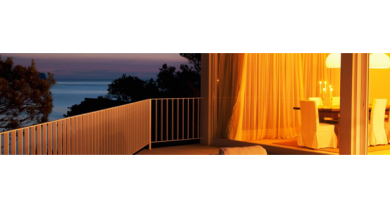Gokyo Lakes vs Everest Base Camp Trek Which One to Choose with a Sherpa?

Perhaps your first dilemma, as it is for many trekkers, is whether to trek to Gokyo Lakes or Everest Base Camp; there are multiple trekking packages available, especially if you consider a Sherpa-led trek. Both treks provide breathtaking views of the Himalayas and the chance to experience the awe-inspiring scenery of the Everest region. However, the two trails compare one another differently in terms of experience, audience, and purpose.
The classic route, acknowledging the proximity to the iconic Mount Everest, is the Everest Base Camp trek. On this trek, travelers will walk through Sherpa villages, stop at Buddhist monasteries, and take in the expansiveness of the region of Khumbu. The ultimate goal, Everest Base Camp, is a real Everest; trekkers are witness to the sheer power of the Everest massif. It’s an experience steeped in history and surrounded by stunning vistas of the world’s highest peak. However, the trek to Everest Base Camp can be extremely challenging due to altitude, length, and the number of trekkers on the route.
The Gokyo Lakes trek, on the other hand, is a quieter, more peaceful experience. The path takes trekkers through breathtaking valleys to the gorgeous Gokyo Lakes — a set of turquoise glacial lakes around some of the highest mountains in the world. From the Gokyo Ri summit, a panoramic view of Everest, Lhotse, Makalu, and Cho Oyu can be seen. The trek is often thought to be slightly less visited, which is why it allows a more peaceful journey while still being an incredible opportunity to experience the grandeur of the Himalayas.
So it really comes down to what you like best. The Everest Base Camp trek is the classic Everest experience! But what if you’re looking for a quieter, equally beautiful trek to learn more about this area of the world and experience the Everest region from a new perspective? A Sherpa guide is essential for safety, cultural insight, and overall trekking experience on any route.
Gokyo Lakes Vs Everest Base Camp: A Tricky Introduction
Two of the most popular and iconic trekking routes in the Everest region of Nepal are the Gokyo Lakes trek and the Everest Base Camp trek. Both boast breathtaking vistas of the Himalayas, including Mount Everest and deliver trekkers the perfect combination of challenge and satisfaction. The treks take you to high-altitude destinations, but each offers a different way to see the region. The Everest Base Camp trek is the most coveted trek amongst those who dream of setting eyes on the base of the world’s tallest mountain, while the Gokyo Lakes trek takes you to a collection of tranquil and stunning glacial lakes set among staggering peaks. The choice between the two is a matter of preferences, a trekker’s — whether it’s a more traditional Everest experience, or a less crowded, more scenic path. Both routes pose physical challenges, but Gokyo Lakes is normally regarded as more peaceful and Everest Base Camp is the de facto trek for anyone wanting to feel the legacy of climbing. Trekking both routes together is the ultimate Everest region experience and has Gokyo Lakes trekking appearing to be the lesser-known trail gem on one hand, while Everest Base Camp appears to be the classic Mount Everest viewpoint trek on the other. Whichever route you take, both treks will treat you to unforgettable vistas and cultural experiences deep in the heart of the Himalayas.
Gokyo Lakes vs Everest Base Camp: Key Differences
Both the Gokyo Lakes trek and the Everest Base Camp trek aim to see the Everest region, yet they witness this mighty mountain range from different perspectives. Both differ mainly on where they go and what they experience. The ultimate pilgrimage for climbers, and trekkers, is Everest Base Camp (EBC), where one can literally stand at the foot of Mount Everest, the tallest mountain on Earth. The EBC trek is the more classic of the two, taking you past vibrant Sherpa towns, iconic landmarks like the Khumbu Icefall, and the chance to feel the raw energy of the Everest region.
In contrast, the Gokyo Lakes trek reaches a chain of beautiful, high-altitude glacial lakes, all set against towering mountain peaks, including Everest. It is regarded as a more tranquil and natural journey, with fewer hikers than the heavily trekked Everest Base Camp route. The Gokyo Lakes trek has its highlight at the Gokyo Ri summit which presents one of the finest panoramic views including Everest, Cho Oyu and Makalu, and more peaks of the Everest massif. Both treks have stunning scenery but Gokyo is a more serene, natural trek whereas EBC is steeped in the history and adventure of mountaineering.
Pros of Trekking with a Sherpa: Why Trek with a Sherpa
There are many reasons why trekking with a Sherpa guide is beneficial, particularly when traversing the harsh high-altitude landscape of the Everest region. Sherpas hail from the Khumbu region and ply the terrain, the weather patterns, and the cultural significance of the places trekkers will see. With years of experience trekking in the Everest region, no one knows this terrain better than them, and their help is essential to achieving a safe, comfortable, and successful trek. Sherpas are trained in high-altitude first aid and can identify altitude sickness, a major risk at such heights, and treat it.
Everest Base Camp with Gokyo and Renjo La Pass They impart an abundance of local knowledge, helping to explain the history, culture, and spirituality of the Sherpa people and the area. They assist trekkers in the sense of the land, telling tales of Buddhist monasteries, local practices, and the importance of the mountains in Sherpa culture. Sherpas also help trekkers focus on the adventure, as they take care of logistics, route planning, and carrying heavy gear. With their presence, they bring a sense of camaraderie and support and make sure the trekkers feel safe and encouraged throughout their journey. All in all, Sherpa trekking adds so much to the experience that it won’t only make the trek safer but also enrich it culturally & spiritually.
Trekking Difficulty: Gokyo Lakes or Everest Base Camp?
Although both the Gokyo Lakes and Everest Base Camp treks are challenging, the Everest Base Camp trek is usually seen as a bit more physically demanding – simply because of its length, popularity, and the higher volume of trekkers on the route. The Everest Base Camp trek is a long trek at high altitude with many days on the trail in the thin air at the base of Mount Everest itself, which all contributes to the chances of developing altitude sickness. The altitude, along with the physical demands of the trek, requires trekkers to possess good fitness levels, stamina, and adequate acclimatization to ensure successful completion. The path frequently has traffic, particularly in busy seasons, which could make the job harder.
Gokyo Lakes and EBC Trek Highlights While the Gokyo Lakes trek is also challenging due to its high altitudes and rocky terrains but is generally regarded as a slightly easier alternative. The route of the trek is shorter by comparison and it’s generally less busy on the trail. But the altitude as well as the strenuousness of the hike, especially when you head up to Gokyo Ri for breathtaking panoramic views of the neighboring peaks, still means trekkers need to be fit for the hike. Acclimatization is important on the Gokyo Lakes trek as well, however, in general, it is a quieter and less crowded choice. At the same time, the Gokyo Lakes trek may be a more accessible option, depending on who you are, as it does not necessitate as much trekking experience as the Annapurna trek, but make no mistake, both require physical fitness and mental resilience to make it to the end.
Hiking Highlights of Gokyo Lakes
One of the most stunning and unique scenic highlights of the Everest region lies in what you see on the Gokyo Lakes trek. The hike leads you around a series of stunning, high-altitude glacial lakes tucked away beneath towering peaks, a landscape both tranquil and majestic. Arguably the most popular is Gokyo Lake, a chain of aquamarine bodies cradled by remoteness and far-off snow-capped mountain tops. The placid lakes are flanked by towering peaks, which makes for a jarring experience.
Apart from that, climbing Gokyo Ri is another significant highlight to gain one of the most panoramic views of the region. From Gokyo Ri, trekkers are rewarded with a 360-degree view of the Everest massif, including Mount Everest, Lhotse, Makalu, and Cho Oyu. Some trekkers claim that the views from Gokyo Ri are even better than those from Everest Base Camp, as they provide a more complete and impressive view of the surrounding peaks. Following the trail to Namche Bazaar and Dole, the beautiful villages here along the trail provide the feel of the famous Sherpa culture and hospitality. With fewer trekkers and beautiful scenery, the Gokyo Lakes trek is a peaceful experience and remains an unforgettable adventure.
Everest Base Camp: The Scenic Highlights
EBC with Gokyo and Cho La Pass Itinerary The Everest Base Camp trek is infamous for its dramatic, breathtaking scenic highlights. As trekkers approach the base of the world’s highest peak, they are rewarded with stunning views of some of the tallest and most recognized mountains on the planet. AarsalJemshad/ Pexels The first major stop of the trek is Namche Bazaar, a busy Sherpa town that is located in the mountains and boasts sweeping views of peaks including Mount Everest, Lhotse, and Ama Dablam. After that, the trek cuts through the dense forests, filled with pine and rhododendrons, with magnificent views of the hills and valleys around you.
Arguably the most famous point of the hike is reaching Everest Base Camp itself. This adventure brings trekkers to the foot of Mount Everest, where dramatic views of the Khumbu Icefall and glaciers surrounded by towering peaks provide a feeling of awe and accomplishment. Adding to the majesty of the experience is the sight of climbers getting ready to attempt the summit. Along the route, hikers also encounter famous sights like the Tengboche Monastery, which offers a dramatic view of Everest in the background, as well as the high-altitude suspension bridges spanning the Dudh Koshi River. Whether it’s the natural beauty, the spiritual symbols, or the rich history of mountaineering, the Everest Base Camp trek can certainly be one of the best ways to get in touch with the wondrous spirit that resides in the Himalayas.
Altitude and Acclimatization
Based on this evidence, you have very important trekking in high-altitude areas like Gokyo Lakes and Everest Base Camp acclimatization. Both treks have scale heights of more than 5,000 meters, so altitude sickness is a major consideration. Proper acclimatization helps trekkers to adjust to the thinning air reducing the chances of altitude-related problems.
The highest point on the Everest Base Camp trek is about 5,364 meters whilst the Gokyo Lakes trek climbs a little higher at Gokyo Ri at 5,357 meters. Both treks feature gradual elevation gains for acclimatization, but the Everest Base Camp trail has more travelers and faster elevation gain, potentially exposing more users to altitude sickness. Ascending to a similar altitude, the Gokyo Lakes trek is a little less strenuous and less frequently traveled, so it is great for those looking to escape the crowds of the busier path.
Everest Base Camp and Gokyo Trek Elevation Sherpas play an important role in handling acclimatization, as they are trained to identify the signs of altitude sickness and can suggest changes to your schedule or route for your safety. Frequent rest days, a slower pace, and abundant food and hydration are essential, and trekkers can navigate altitude challenges with the help of a Sherpa and packing porter. Whatever route you take, it’s crucial to give your body time to acclimate to the higher altitudes and heed your guide’s follow-your-heart advice for a successful — and safe — trek.
Gokyo Lakes vs Everest Base Camp Best Time to Trek
The best time to trek is essential to make your journey fruitful and enjoyable, and both Gokyo Lakes Trek and Everest Base Camp Trek have some best seasons to trek. The trekking seasons in the Everest region are spring (March to May) and autumn (September to November). The clearest skies, mild temperatures, and little rainfall make these months the most enjoyable and photogenic for trekkers.
Spring brings milder weather — especially in the lower elevations — and clearer skies for excellent views of the surrounding peaks. This time of the year is also a busy one for mountaineers trying for the summit of Everest, so it is quite bustling around the region. For a quieter time, autumn may be the best time; it is slightly cooler but trails are less restaurant and more crowded. In the fall, colorful foliage blankets the lower regions, providing a special touch to the landscape.
Both treks can be done in these seasons but the Gokyo Lakes trek is not as busy as the Everest Base Camp trek during these months, especially in autumn. If avoiding the crowds is what you’re after, you can choose the Gokyo Lakes trek in the autumn season which offers equally stunning views of the Himalayan peaks but a much more laid-back trail. Whatever route you pick, hiking in spring or autumn is the best possible choice for trekking in this incredible region!
Cultural and Local Experience on All Routes
Both the Gokyo Lakes and Everest Base Camp trek provide an opportunity for trekkers to experience and immerse in the Sherpa people’s rich culture and traditions. Along both routes on their way up, trekkers will make their way through picturesque Sherpa villages and past Buddhist monasteries and iconic sites such as prayer flags and stupas, each a window onto daily life in the region.
The Everest Base Camp trek puts trekkers in touch with the vibrant culture of the Khumbu region, offering opportunities to interact with villagers and experience the customs of the renowned Sherpa people. The trail winds through villages such as Namche Bazaar, Tengboche, and Dingboche, which all have unique cultural significance. One of the most memorable spiritual sites on the route, the Tengboche Monastery allows trekkers an intimate look at prayer ceremonies and an understanding of the Sherpa’s deep connection to the mountains.
Everest Base Camp Gokyo Trek Best Time The Gokyo Lakes trek, though no less rich in technical culture, provides a more secluded, personal cultural experience. The trail passes between less fragrant villages like Dole and Machhermo, where trekkers can meet local families and enjoy a quieter, slower pace of life. Another essential sacred place in the Gokyo Lakes region is Gokyo Ri, the top of which provides stunning scenery of its peaks. Sherpas here share both their spiritual beliefs and the role that the mountains play in religious practices.
Both treks offer cultural insight, but the Everest Base trek is a more traveled and busiest trek, while the Gokyo Lakes trek is a more fain and quiet trek for contemplation.
Itinerary Comparison And Trekking Duration
The exact length and route of either Gokyo Lakes or Everest Base Camp treks will depend on your speed and acclimatization needs, but in general, the Everest Base Camp trek is 12-14 days, while the Gokyo Lakes trek is a few days shorter, and takes around 10-12 days. Both treks are designed to include enough rest days to acclimatize, allowing time to adjust.
The Everest Base Camp trek starts with a flight to Lukla and a slow hike up through the villages of Namche Bazaar and Tengboche before the base camp. To prevent altitude sickness, the trek often follows an “up, rest, down” rhythm, with a couple of nights spent at higher elevations to acclimatize before making the next leg of the journey.
The Gokyo Lakes trek follows a similar structure but takes trekkers on an alternative path that arrives at the scenic Gokyo Lakes, and then to Gokyo Ri for sweeping views of the Everest massif. This is followed by the trekkers descending the same way or connecting to the Everest Base Camp trail, which makes this route shorter, but the trek remains equally fulfilling. Fewer crowds and quieter villages mean the Gokyo Lakes trek is a slightly more tranquil experience.
Both itineraries are flexible with many variations available through guides and Sherpas to suit individual preferences. For those seeking a longer, more traditional trek with ample time to explore Everest Base Camp, the Everest Base Camp route is a perfect choice. If you want a shorter trek but still want a spectacular experience, the Gokyo Lakes trek is a great alternative.
How Sherpas Make Your Trek Safer and Easier
The Gokyo Lakes and Everest Base Camp treks simply wouldn’t be the same without Sherpas. Renowned for their intimate understanding of the landscape as well as their rich high-elevation trekking background, Sherpas allow for great help and guidance at every step of the way. From controlling the pace of the trip to making sure all trekkers are acclimatized, their expertise helps trekkers concentrate on the adventure while leaving the logistical and safety aspects to the professionals.
Altitude sickness becomes an increased risk at higher altitudes, and Sherpas are trained to identify the onset of symptoms and act quickly when necessary. They help adjust trekking itineraries to minimize the risk of altitude sickness, making sure that rest days are observed at critical junctures, and they bring medical supplies and oxygen in case of emergencies. Not just guides, sherpas help with the physicality of the treks — so they’re important both for safety and for morale, particularly when conditions are sketchy, or a trek has challenging lengths.
Shuffling around the mountain, the Sherpas not only ensure safety but also enrich the trip for Western climbers with cultural elements, providing insights into the spiritual and traditional history of the Everest region. Their guidance allows trekkers to connect more to the landscape, enriching the journey. From providing guidance on trekking techniques to sharing stories about Sherpa culture, their contribution enhances the overall experience significantly.
Thanks to their dedicated service, Sherpas don’t just keep trekkers safe, but ensure they have enough knowledge to soak up the full majesty of their surroundings.
And the verdict is: Which trek is for you?
Gokyo and EBC Trek Reviews Final Words The dare you choose: Gokyo Lakes or Everest Base Camp will ultimately depend on your choice, fitness level, and the kind of experience you want. If you ever dreamed of standing on the base of Everest looking forward to the most celebrated base camp then the Everest Base Camp trek is the best choice for you. An extremely popular trek, it not only offers great cultural variety but a strenuous hike and the reward of reaching one of the most iconic trekking spots in the world.
Alternatively, you can make your way to Gokyo Ri with a more peaceful trek, incredible views, and a different feel from the top of Everest. You can soak up the emerald beauty of the Gokyo Lakes without the crowds of people on the Everest Base Camp trail on this trek. It is much more peaceful and silent, because not too many people take this route.
Regardless of which trek you choose, trekking with a Sherpa guide will ensure that your journey will be safe, well-supported, and educational. Your Sherpa guides don’t just help you navigate the rugged terrain or climb to the right altitude, they also provide invaluable cultural perspectives that help you understand the region better. Both routes, the classic Everest Base Camp trek, and the less-trafficked Gokyo Lakes trek, are guaranteed to give the adventure of a lifetime in one of the Most Beautiful regions in the world.





